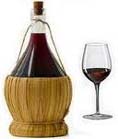
How To Fry - 2
|
|
|
<< Previous Page 2
Continuing the tips on how to fry ...
Deep fat frying
This method is quicker then shallow fat frying as food is immersed completely. Therefore food usually needs a coating to protect it from the great heat of the fat and also to keep the fat free from taste; in this way, the fat can be used many times for different foods.
When cool, strain used fat through muslin into a bowl till wanted again, covering when it is quite cold, and storing in a cool place.
Choose a deep heavy gauge pan (fat bath or deep fryer) which covers source of heat, complete with a wire basket to fit. Or buy a separate folding wire basket for fitting into any saucepan (which must, however, be of reasonably heavy gauge because fat is heated to high temperatures in deep fat frying). This separate basket is useful when only occasionally deep fat frying because its flexibility means it can be used in an ordinary frying pan for cooking small foods such as croutons.
When frying foods coated in soft batter mixture, you may find it easier to fry them in a fat bath without using a wire basket since batter tends to stick to the basket.
More on how to fry:
Suitable fats to use: vegetable or nut oil; lard; clarified dripping or commercially prepared fat, but it is better not to mix these. Olive oil and margarine are not suitable for deep frying. Never fill pan with more than one-third fat or oil.
Melt the fat, or put the oil, over moderate heat, then increase heat until right cooking temperature is reached. Oil must never be heated above 375F, and for sunflower oil, and some commercially prepared fats, 360F is the highest recommended temperature. It is important to remember that oil does not "haze", as solid fats do, until heated to a much higher temperature than is required - or is safe - for frying.
Apart from food cooked on a rising temperature (eg. pirozhki), the fat or oil should never be below 340F, as it is essential that the surface of the food is sealed immediately. This means that it does not absorb the fat, and is more digestible.
Here is more how to fry information:
The best way of testing temperature is with a frying thermometer. Before using, it should be stood in a pan of hot water then carefully dried before putting into the fat bath. The hot water warms the glass so that it does not break when plunged into the hot fat.
If you have no thermometer, drop in a small piece of the food to be cooked (eg. a chip). If the fat or oil is at the right temperature, the food will rise immediately to the top and bubbles appear round it. Alternatively drop in a cube of day-old bread, which should turn golden-brown in 20 seconds at 375F; 60 seconds at 360F.
Page 1 of this article on how to fry can be found on the previous page.
<< Previous Page 2
Read more Italian traditional food related articles here
- cook
- italian
- fish
- recipe
- meat
- food
- dish
- bread
- recipes
- sauce
- dessert
- cooking
- cheese
- herbs
- italian traditional food
- traditional
- pasta
- traditional food
- olive oil
- meal

Copyright © 2009 - . All Rights Reserved Worldwide. Italian Traditional Food
You may not reprint articles from this website without the written permission of the site owner.
Disclaimer: Articles on this Website are provided for information purposes only. Italiantraditionalfood.com does not accept any responsibility or liability for the use or misuse of the article content on this site or reliance by any person on the site's contents.
|

Latest Articles
|
|
COMMENTS 'Great recipes and a great site...' 'At long last, a recipe site that delivers good basic food...' 'Tasty and easy to make recipes. What more can you ask for?...' 'Please keep on providing these rustic recipes as I enjoyed them very much....' 'Not only some great recipes but also some great articles. Thanks." 'What a good idea to provide these recipes. Keep up the good work.' 'Lots of very intresting articles on all aspects of the Italian lifestyle...' 'Wishing you every success with your great new recipe site.." 'Good to see some authentic Italian rustic recipes..." 'The step-by-step recipes are very easy to follow. Thank you.' 'It is so much easier to follow the Italian food recipes thanks to the step by step photos." '...thank you for publishing this selection of rural dishes. They are fast becoming part of my staple diet.' |
Copyright © 2009 - . All Rights Reserved Worldwide. Italian Traditional Food
 Digg
Digg Stumbleupon
Stumbleupon Google Bookmarks
Google Bookmarks Delicious
Delicious Twitter
Twitter Facebook
Facebook Yahoo My Web
Yahoo My Web Reddit
Reddit